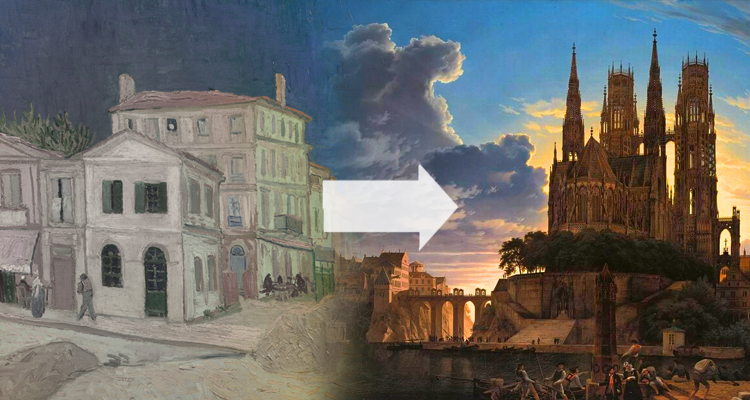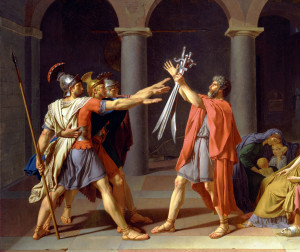If you’re like me, you can never find enough time in the day to work on everything you want to make your game a rich & rewarding experience. It can be a lot of pressure on a DM to create unique experiences that hold the players’ enthusiasm from start to finish. One of the ways I try to alleviate this pressure is by reusing an old setting, while avoiding repetitive and predictable outcomes.
Sequels -love ’em or hate ’em- are at their best when they hold true to the originals’ inspiration, and at their worst when they run good characters into the ground and add nothing of value to the universe. Sequels in RPGs can be great time & energy savers, and can even resuscitate your old abandoned games. One of the things I personally dislike about starting a new D&D game is the amount of work that goes into world-building, making NPCs, and creating interesting encounters. It feels like a waste of energy to build something the players never see. In order to save us this time, I’m going to share how to creatively revive old NPCs and player characters.
Non-Player Characters
Bringing back NPCs can be the most interesting & exciting part of reusing an old campaign. The story will mean more to the players if they already know some of the key characters. Since the new heroes are not familiar to old NPCs, you can have them take a new approach, and that’s where things get interesting.
While most of the old NPCs should hold true to their core values, one or two of them should evolve in some way to change their outlook on the world. The players should be able to detect this change, but at most it should be a minor inconvenience to the characters they’re playing. You’ll want your players to feel familiar with these NPCs and trust them. This will save you the time of having to build trust with new NPCs when you really just want your player to get to the fun parts.
Instead making previously good NPCs betray the new heroes, a perhaps less predictable idea would be for one of the previously bad NPCs to actually help them unexpectedly. This is a twist that will add new dimensions to a villain or rival that the players might have once hated. I personally prefer this idea because it allows you to touch on the morally gray areas of your world in more interesting ways than a “good-guy-turned-bad” would. Having a good NPC turn on the players can often come off as a trite story twist, and it will devalue all NPCs for both you and the players.
Player Characters
The single strongest pieces you have to play with are old player characters. Some DMs might want to stay away from this idea out of respect for the players who played them. This is wise if you’re unsure that you can play the character accurately, or if a player might get upset with how you’re portraying their retired character. However, players will often love to see their old characters make a cameo, even if it’s just to see how they’ve evolved.
For these characters to be more realistic, they should’ve grown and changed in ways their previous player
might expect. Their old PC is now a brand new NPC, and he has seen some shit since they last played him! Some characters might have become masters of their craft and gained prestige. Perhaps the old characters are in some way immediately inaccessible to the players. This will make the players eager to fulfill quests and earn reputation so they can meet their old personas again. It also grants these old characters much more power and resources that they can pass on to the players.
Conversely, the old heroes could stand in opposition to the players. This twist can offer any player a wide spectrum of emotions, which will always be a powerful motivator to keep playing! You should encourage questions like: “What made my character turn bad/evil?”, “Why are they fighting for something/someone new?”, and “Will I have to kill them?”. Once a player knows that they might have to fight their old self, they’ll be on edge any time the old character reappears.
If you want to use an old setting but don’t want the baggage of old characters, you should at least explain their demise or downfall at some point in the campaign. By providing an explanation, you’ll set your players’ expectations… and of course, that would be the perfect set up for bringing the old characters back.
I love to revisit what I’ve already built, bring it back to life, and evolve it into something deeper. Reviving old NPCs and characters will have you and your players reaping the rewards of a richer campaign filled with more realistic emotional connections.
In part 2, I’ll be sharing how to use old locations, encounters, and items to expedite your world building process. In the meantime, tell us how you’ve revamped your old settings for a new campaign!


